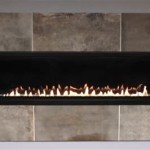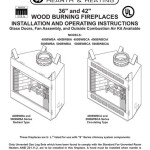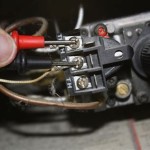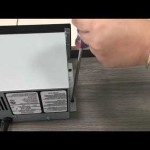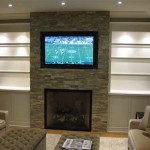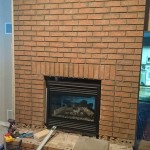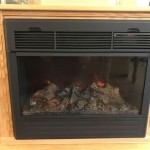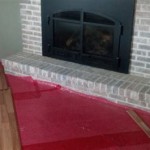Fireplace Stove Inserts: Enhancing Efficiency and Aesthetics
Fireplace stove inserts represent a significant upgrade to traditional open fireplaces, offering improved heating efficiency, reduced emissions, and enhanced aesthetic appeal. These self-contained units are designed to be installed directly into an existing fireplace opening, transforming it from a potentially inefficient heat source into a powerful and controllable heating appliance. Understanding the various types, features, and installation considerations is vital for homeowners considering this upgrade.
An open fireplace, while visually appealing, loses a substantial amount of heat up the chimney. This is because the draft required to sustain the fire pulls warm air from the room and expels it outside. Fireplace stove inserts, on the other hand, are closed combustion systems that significantly reduce this heat loss and direct more heat into the living space.
Types of Fireplace Stove Inserts
Fireplace stove inserts are primarily categorized by the type of fuel they burn: wood, gas, or pellet. Each type offers unique advantages and disadvantages in terms of heat output, fuel cost, convenience, and environmental impact.
Wood-burning inserts are a popular choice for homeowners who enjoy the crackling ambiance of a wood fire and have access to a readily available and affordable wood supply. These inserts typically consist of a firebox, a door with a glass viewing panel, and a flue connector that vents exhaust gases up the chimney. Modern wood-burning inserts employ advanced combustion technologies to burn wood more completely, reducing smoke and creosote buildup while maximizing heat output. They often include features such as air wash systems to keep the glass clean and catalytic or non-catalytic combustors to further reduce emissions.
Gas fireplace inserts offer convenience and ease of use. They are fueled by natural gas or propane and can be turned on and off with the flip of a switch or a remote control. Gas inserts provide consistent heat output and require minimal maintenance compared to wood-burning models. They are available in a variety of styles, from traditional log sets to contemporary designs featuring glass beads or stones. Gas inserts also vent through the chimney, but typically require a flexible flue liner to ensure proper venting of combustion gases.
Pellet stove inserts burn compressed wood pellets, which are a renewable and relatively clean-burning fuel source. Pellet inserts offer a balance of convenience and efficiency. They feature an automatic feeding system that delivers pellets from a hopper to the firebox, maintaining a consistent burn rate. Pellet inserts produce less ash than wood-burning stoves and offer programmable temperature controls. Like gas inserts, they require a flue liner for proper venting.
Key Features and Considerations
Beyond fuel type, several key features and considerations influence the selection of a fireplace stove insert. These include heating capacity, efficiency ratings, size and dimensions, venting requirements, and aesthetic design.
Heating capacity is measured in British Thermal Units (BTUs) per hour. The appropriate BTU rating for an insert depends on the size of the space to be heated and the local climate. A larger room or a colder climate will require a higher BTU rating. Manufacturers typically provide guidelines for selecting the correct BTU output based on square footage.
Efficiency ratings indicate how effectively the insert converts fuel into usable heat. Higher efficiency ratings translate to lower fuel consumption and reduced heating costs. For wood-burning inserts, look for models that are EPA-certified for clean burning. For gas and pellet inserts, check the Annual Fuel Utilization Efficiency (AFUE) rating. Higher AFUE ratings indicate greater efficiency.
Size and dimensions are crucial for ensuring a proper fit within the existing fireplace opening. It is essential to measure the fireplace opening accurately and compare those dimensions to the insert's specifications. Adequate clearance around the insert is also necessary for safety and proper ventilation.
Venting requirements vary depending on the fuel type and local building codes. Wood-burning inserts typically require a stainless steel chimney liner that extends the full length of the chimney. Gas and pellet inserts may use a flexible flue liner, but it is important to consult with a qualified installer to ensure compliance with all applicable regulations.
Aesthetic design is a significant factor for many homeowners. Fireplace stove inserts are available in a wide range of styles, from traditional to contemporary, to complement any décor. Options include different finishes, door designs, and viewing window sizes. The choice depends on personal preferences and the overall design of the room.
Installation and Safety
Proper installation is critical for the safe and efficient operation of a fireplace stove insert. It is generally recommended to hire a qualified professional installer who is certified by organizations such as the National Fireplace Institute (NFI). A professional installer will ensure that the insert is properly sized, vented, and connected to the fuel supply and electrical system (if applicable). They will also verify compliance with all local building codes and regulations.
Safety is paramount when operating any type of fireplace stove insert. Regular maintenance, including chimney cleaning and inspection, is essential to prevent creosote buildup and other potential hazards. Smoke detectors and carbon monoxide detectors should be installed and tested regularly to provide early warning in case of a fire or carbon monoxide leak.
Homeowners should also follow the manufacturer's instructions for operating the insert safely. This includes using the correct type of fuel, avoiding overfilling the firebox, and ensuring adequate ventilation. It is also important to keep flammable materials away from the insert and to supervise children and pets when the insert is in use.
By carefully considering the various types, features, and safety aspects of fireplace stove inserts, homeowners can transform their existing fireplaces into efficient and aesthetically pleasing heating appliances, enhancing comfort and reducing energy costs.

Why A Wood Burning Fireplace Insert Bethesda Md Service

Ventis Hei240 Wood Burning Insert Rockford Chimney

What S Best A Fireplace Stove Or Insert We Love Fire

T25i Timberwolf Wood Fireplace Insert Hearth Stove Patio

Wood Inserts We Love Fire

Why A Wood Burning Fireplace Insert Bethesda Md Service

Summertime Deals On Fireplaces Stoves Inserts And Linear

Rais 60 Insert Wood Fireplace For

Premium Wood Fireplace Inserts Made In Usa Lopi Stoves

All About Wood Stove Fireplace Inserts Champs Chimney
Related Posts

